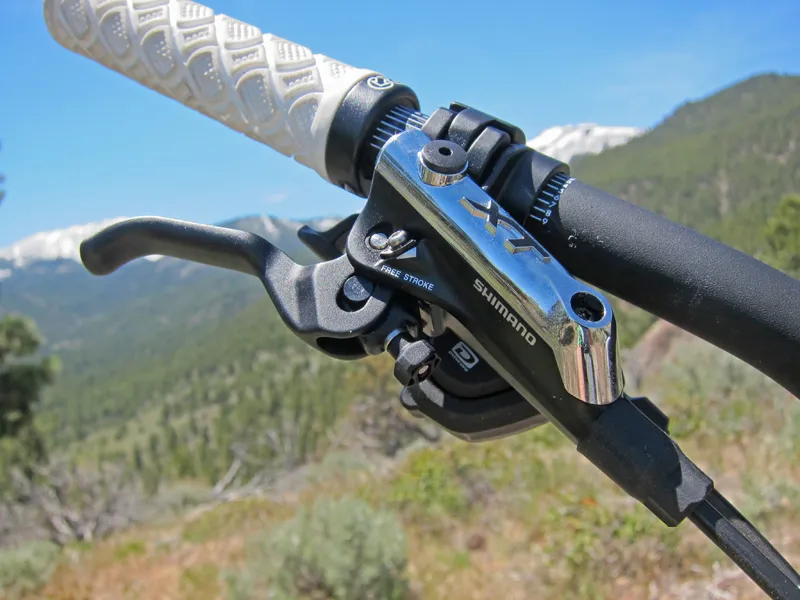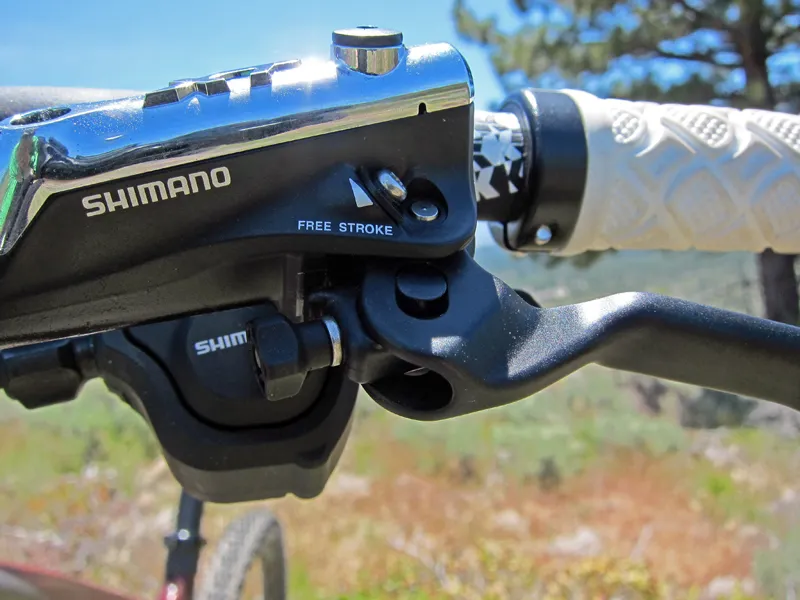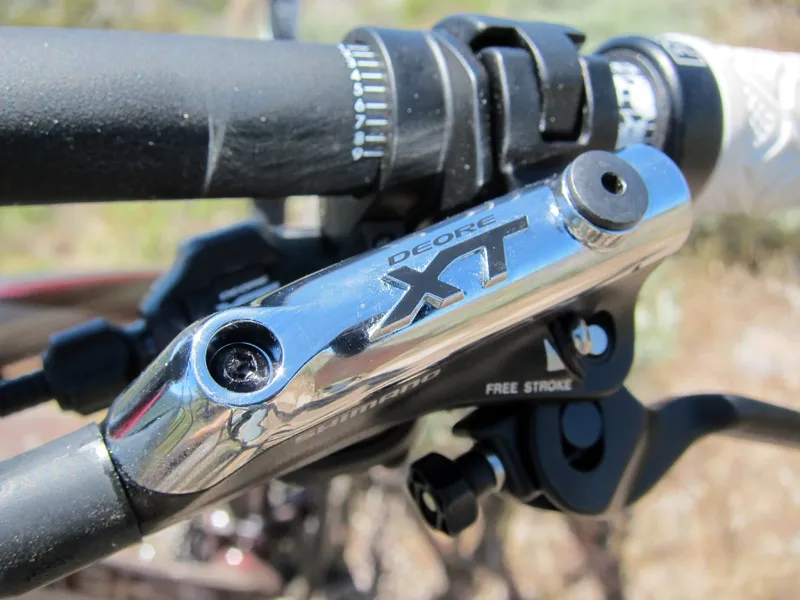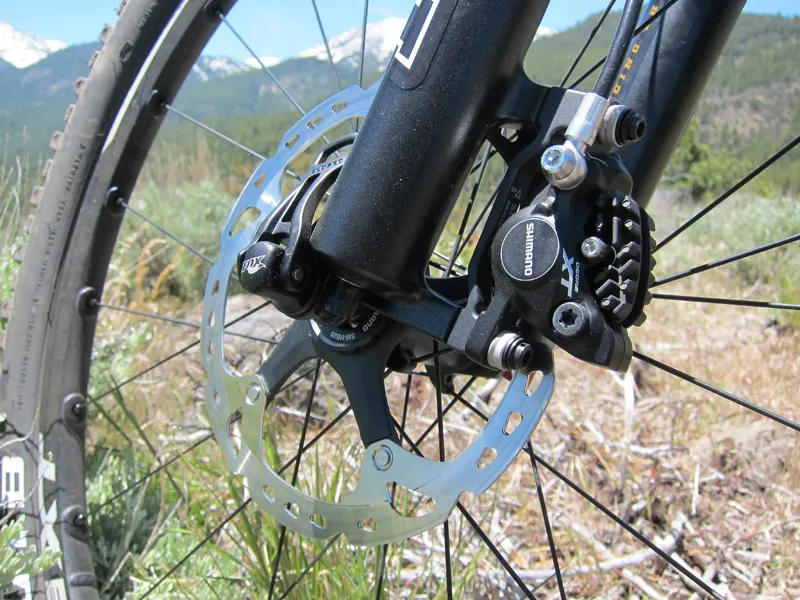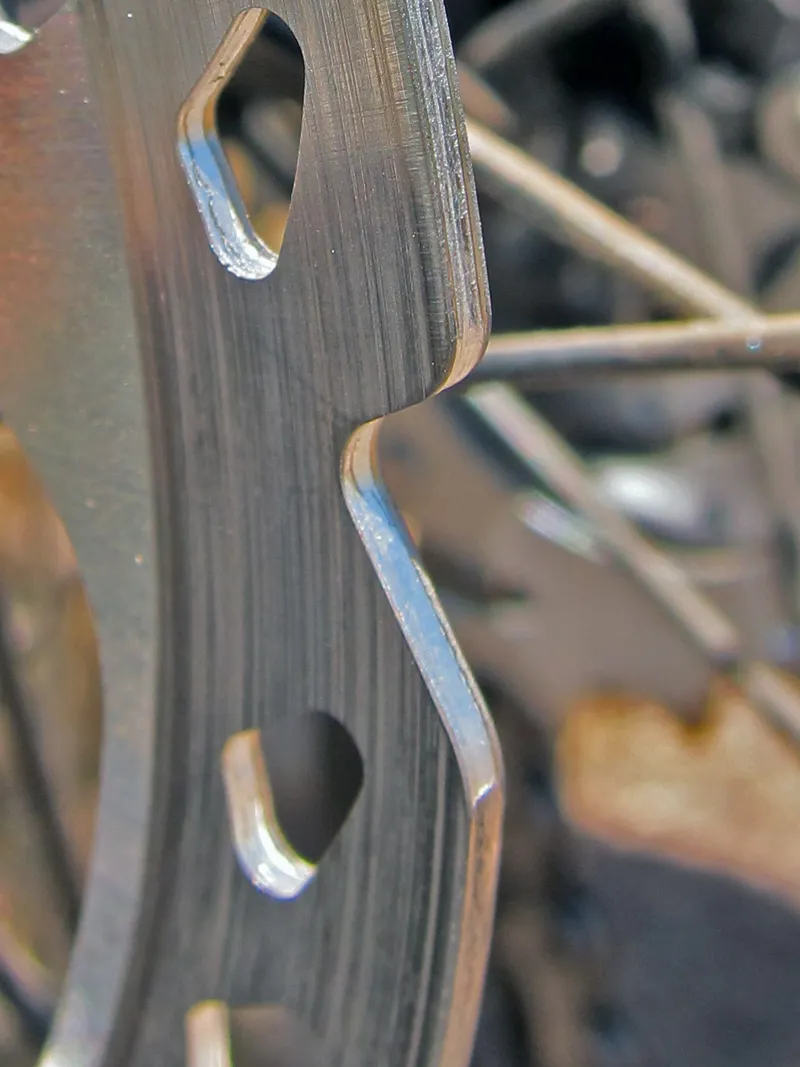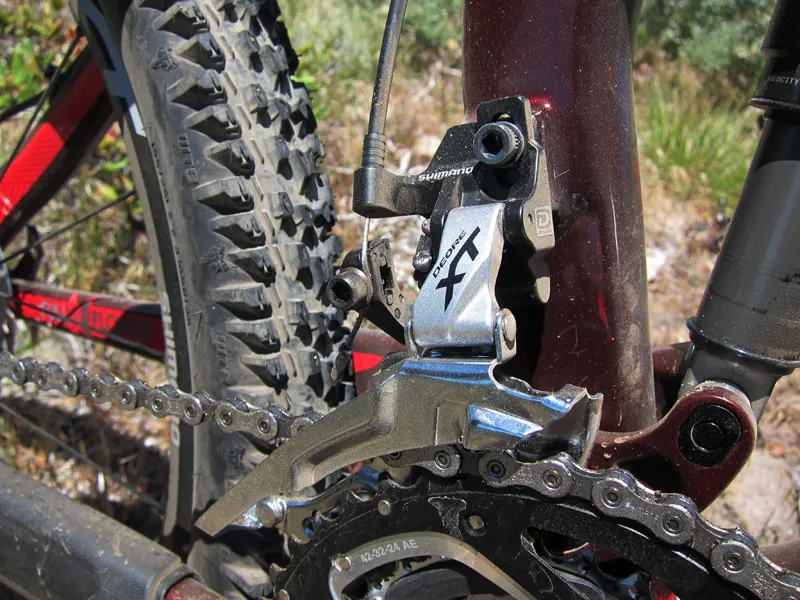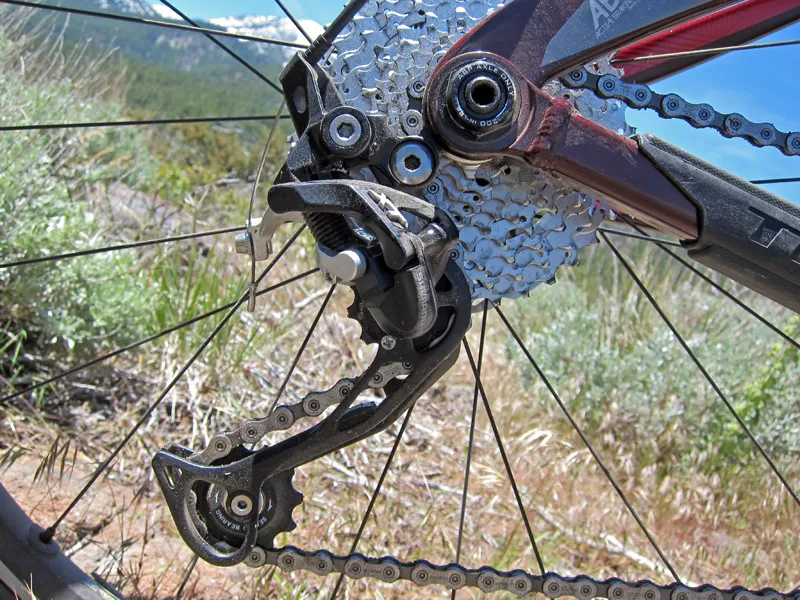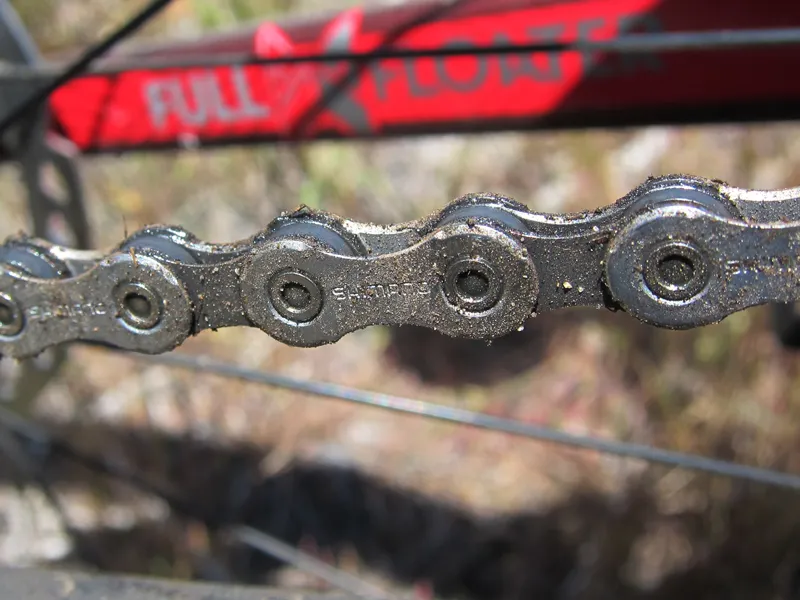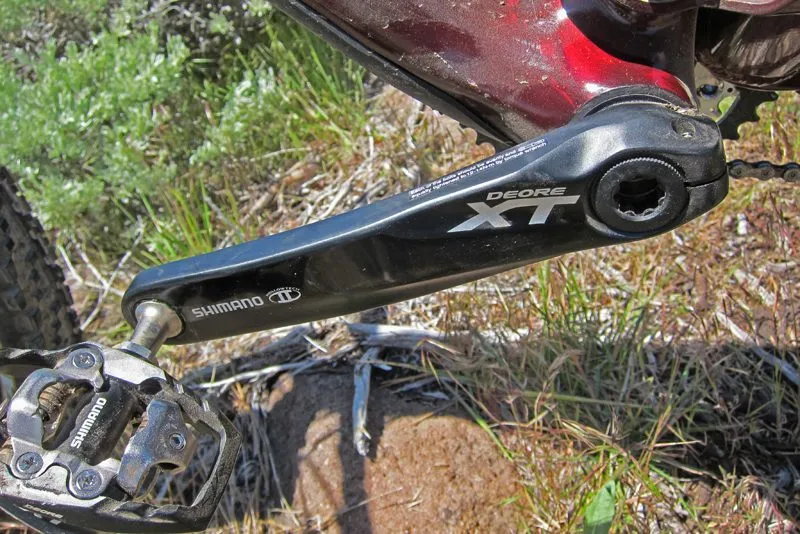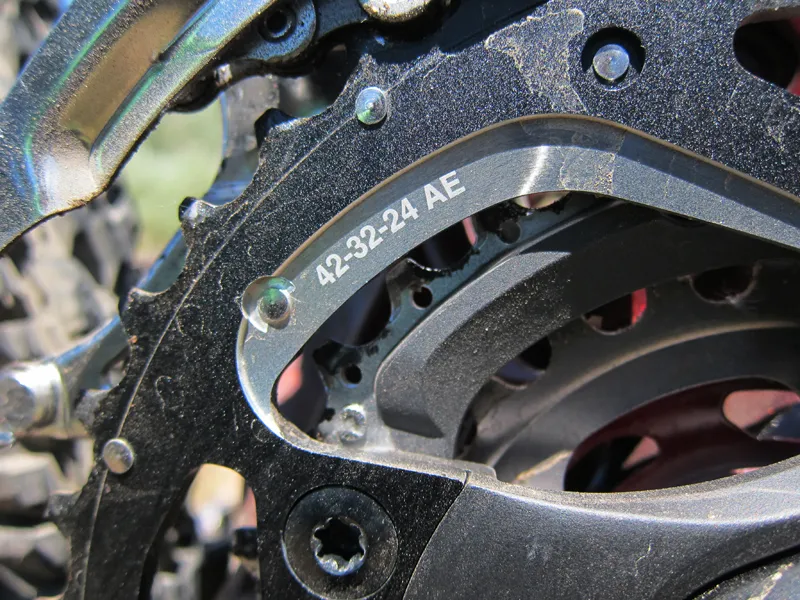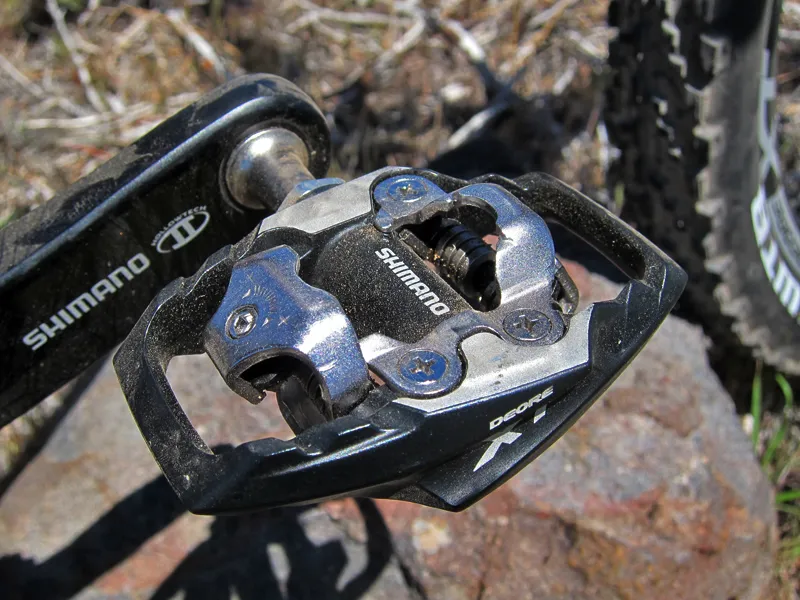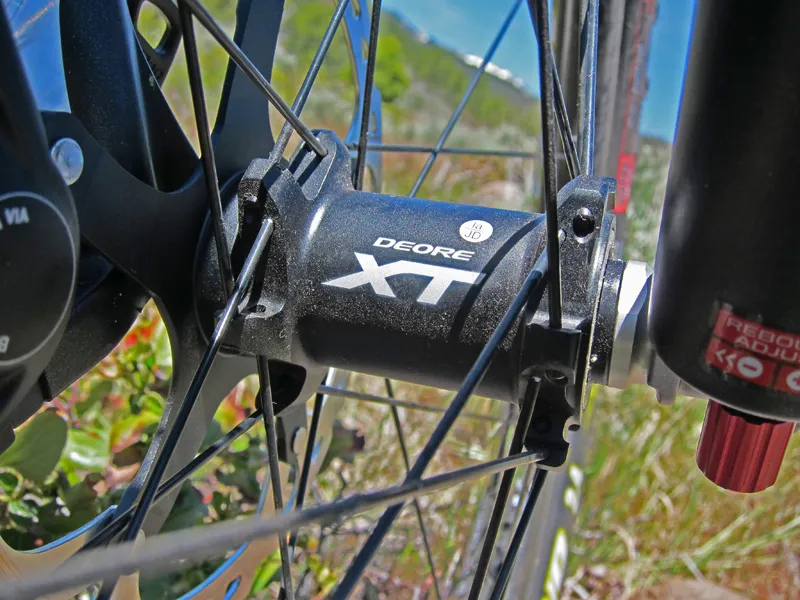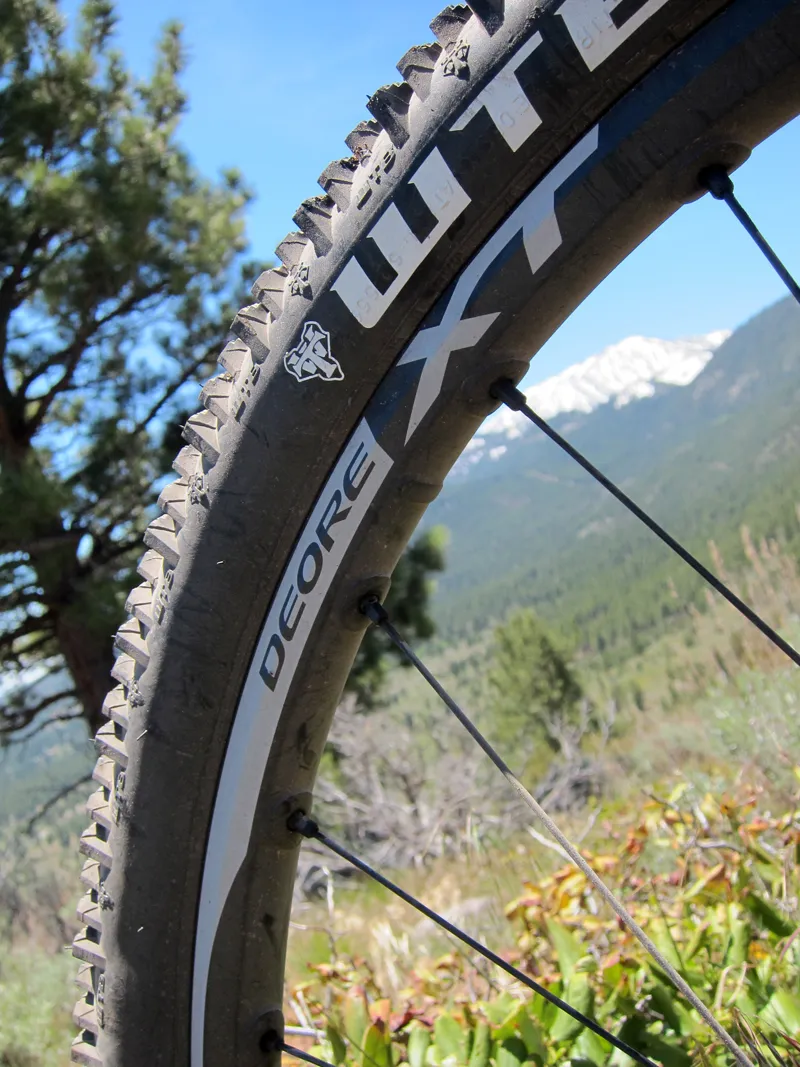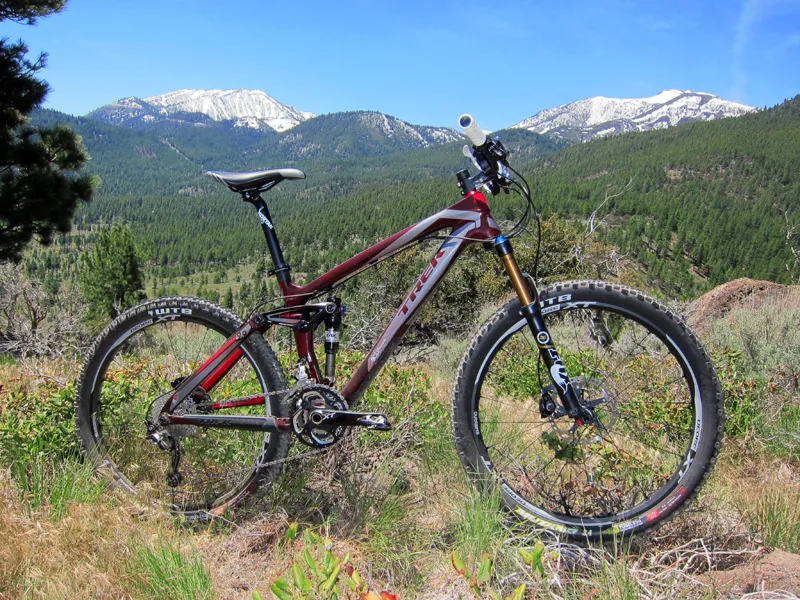Shimano created some serious waves with their latest-generation XTR group, what with its fantastic brakes, ultra-smooth shift performance and impressively light weight. But not many people can afford it.
Now that we've ridden the new Deore XT, it seems that Shimano have managed to trickle down virtually every aspect of XTR's functionality and feel but with a far more attainable pricetag and just a little more weight. More value-minded enthusiasts will be glad they've waited.
Shifting: More positive lever feel and new two-ring options but still with that familiar Shimano precision
Overall shift performance hasn't changed much relative to the previous-generation 10-speed Deore XT group, though that's hardly a bad thing in this case. Combined with the carryover cassette and asymmetrical chain, the revamped derailleurs and shifters again provide ultra-smooth and precise gear changes in both directions and at both ends when just spinning along or churning out lots of power. Credit out back also goes to the stout Shadow-type rear derailleur with its widely set pivots that allow less flex under load along with the new front mechs that offer similarly stiffer construction.
Shift lever feel on the new Deore XT has improved, however, with the addition of Shimano's Vivid Index concept for 2012. Overall system spring tensions remain pleasantly light in typical Shimano fashion but the detent spring tension has increased for a more positive and tactile action. In combination, this yields much better feedback on bumpy trails than before for fewer accidental shifts while also keeping things easy on your thumbs – something most of us aren't bothered with on everyday rides but a feature to which endurance athletes might want to pay attention.
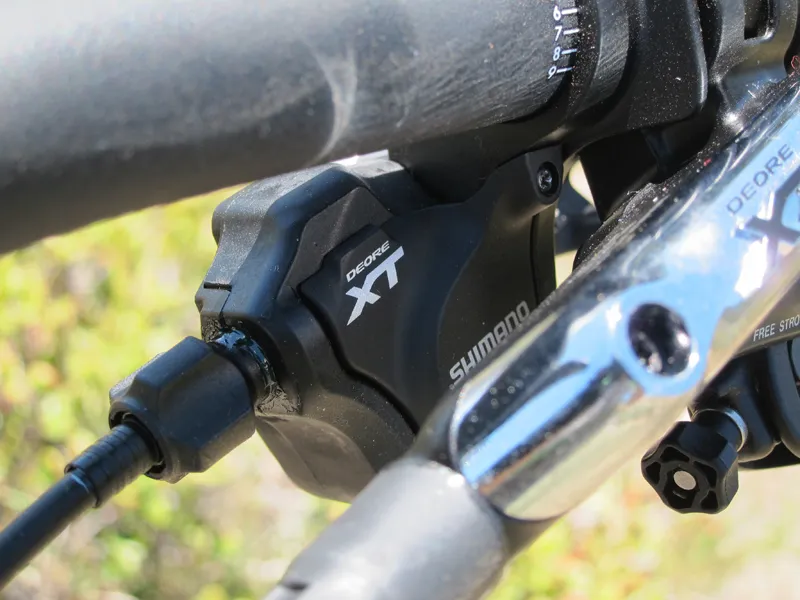
Optical gear indicators are removable on the new Shimano Deore XT shifters, which will be offered in both separate and integrated versions
While improved, lever feel is still one of the most obvious areas where the new Deore XT doesn't quite match XTR. Without the full complement of lower-friction ball bearings like the flagship model, Deore XT's paddles aren't quite as uncannily silky smooth. But we're splitting hairs here – most users won't even notice.
Multiple shifts are a piece of cake, not to mention very fast, especially out back. Users can downshift up to four rear gears per sweep of the non-adjustable pull lever or upshift up to two cogs per swing of the stepped push-or-pull trigger. In either case, the paddles are well placed and intuitive to operate just as before. Separate pods with removable gear indicators can be positioned independently of the brake levers while a new Ispec integrated option will offer up a less adjustable but cleaner-looking cockpit depending on your preferences.
Braking: Lots more power and improved heat dissipation but a bit grabby at low speeds
Braking performance is a dead ringer for XTR across all the metrics that most users will care about, including lever feel, power and modulation. Shimano claim a 25 percent jump and until we can get a set on our instrumented test bench, that figure is wholly believable. Even with a modest 180/160mm front/rear rotor setup, we had no problems quickly and effortlessly scrubbing off lots of speed while ripping some descents. Lever action is very light, smooth, and highly communicative of what's going on at the other end.
That power is also easily controllable, in trademark Shimano fashion. The metal pads of our test samples were remarkably quiet, squealing for just a split second after creek crossings. They were a bit grabby for our liking during low-speed technical descents where feathered modulation is key; the resin pads should be more forgiving in terms of modulation, so users should choose carefully. It's also worth noting that the two compounds can be mixed — as Shimano has suggested in the past — so, ultimately, riders have the ability to customize the feel of the brakes for their style and riding conditions.
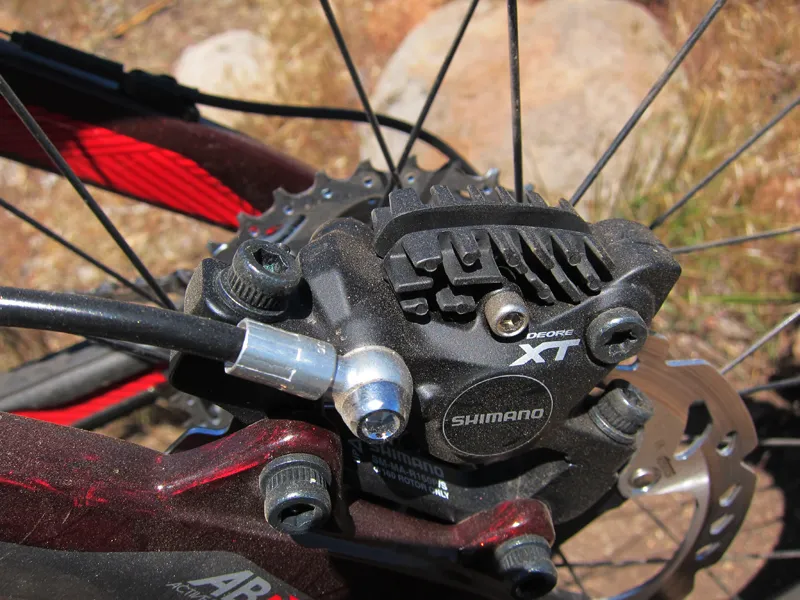
Shimano's revamped Deore XT brake caliper uses a two-piece forged aluminum body with heat management features that include 22mm-diameter ceramic pistons and finned brake pads
None of these improvements should come as any surprise given the changes made. The newly compact master cylinder architecture is wholly lifted from XTR, with new stubby one-finger levers (they'll still work with two), an Avid-like pivot layout that yields a more natural feel as you pull the lever through its arc, Servo Wave variable pivot leverage ratios for fast pad engagement and finer control, and tool-free lever reach and tooled pad contact adjustments just like with the XTR Trail levers.
At the other end lie new forged aluminum two-piece calipers with the same 22mm-diameter ceramic pistons as XTR for more even pad force application and better heat insulation for the underlying mineral oil. Shimano have even carried over the finned brake pad backing plates and three-layer stainless steel-aluminum-stainless steel rotors from XTR to further facilitate heat dissipation.
Our test rides weren't rigorous enough to really put that new heat capacity to the test but experience with XTR suggests that the concepts work at preventing fade, and quite well at that. Shimano will offer the new Deore XT ICE Tech rotors in 160, 180 and 203mm diameters, and in both Center Lock and six-bolt variants.
Drivetrain: Familiar crank technologies with a new double option; two new pedals
Deore XT's standard three-ring drivetrain doesn't bring with it any major surprises. Yes, the hollow forged aluminum crankarms have revised styling but also the same familiar Hollowtech II pinch-bolt and external bearing layout. Shimano have retained the tighter 42/32/24T Dyna-Sys spacing that we've grown quite fond of for its smoother shifts, fewer required recovery shifts across the wide-range 11-36T 10-speed cassette, and fantastically rigid carbon-composite-reinforced steel middle chainring.
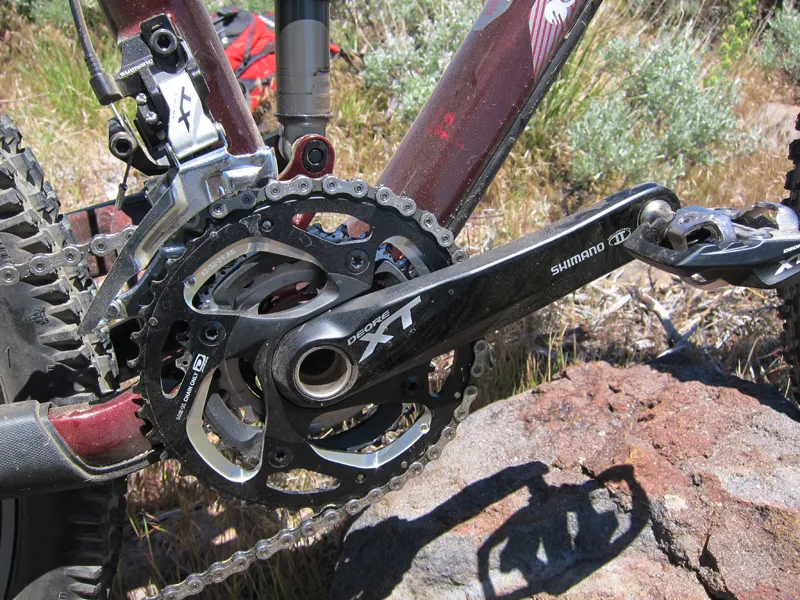
The forged aluminum Shimano Deore XT crank doesn't use the fancy two-tone bare polished and anodized finish of XTR but then again, it doesn't cost nearly as much
Just as before, the arms are admirably rigid, far less nerve-wracking to hammer into rocks than carbon fiber ones, and the whole drivetrain is refreshingly quiet on the trail for the most part. The one exception is that is suffers from the same levels of chain slap as before – nothing worse than the competition, mind you, but now that we've been given a taste of Shimano's intriguing Shadow Plus rear derailleur design, we can't help but eagerly await its addition to Deore XT for more silent running.
In bigger news, yes, Deore XT will now be offered with a double chainring option in 40/28T or 38/26T sizes, with specific front derailleurs to match (the front shifter includes a handy built-in switch so the same unit works for doubles or triples). Unlike XTR, though, neither features a narrower pedal stance width. We haven't ridden with either of the doubles yet so you'll have to wait a bit longer for our ride impressions there.
We did, however, get time on Shimano's new Deore XT PD-M785 Trail pedals, with similarly oversized aluminum platforms to XTR. No surprises here, either: cleat engagement and release are positive and direct as always but the larger platform is more supportive of softer-soled shoes like the Pearl Izumi X-Alp Elite. Though heavier than XTR, the Deore XT option is of course cheaper and with little penalty to show for it – and there's also a revamped, lighter 'Race' pedal that we'll sample a little later.
Wheels: New tubeless-compatible Race and Trail editions with expanded axle fitments
In keeping with the theme, Deore XT's new wheel offerings will include a lighter Race edition and a tougher Trail one. The former uses a lighter 19mm-wide (internal) rim to help reduce rotating weight while the Trail wheelset gets a more substantial 21mm dimension for better support of wider tires. Both get UST tubeless-compatible rim designs with solid outer walls, Shimano's trademark brazed-on threaded nipple anchors and steel freehub bodies.
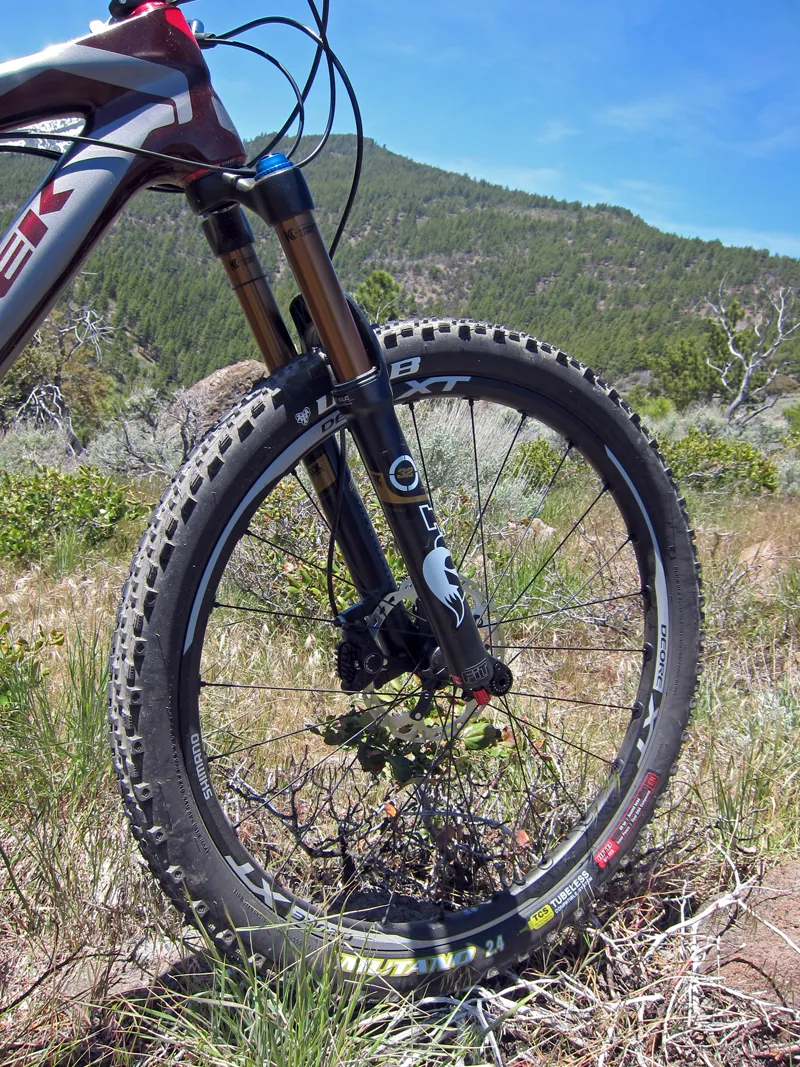
Both Shimano Deore XT wheelsets use welded rims with brazed-on threaded nipple anchors that allow for a solid – and fully UST-compatible – outer rim wall for easy tubeless setup
Both also use smooth-rolling adjustable (and easily serviceable) cup-and-cone axle designs with angular contact bearings. Trail edition wheels will be offered in either 135mm quick-release or 142x12mm through-axle rear fitments plus 15mm through-axle front fitments only, while the Race edition will be offered in rear quick-release only but either quick-release or 15mm through-axle at the front.
We've only sampled the Trail wheels so far and it's too early to pass judgment. We will say, though, that the relatively fast-engaging freehub body (the same as last year's as far as we can tell) rotates with little friction so there's little chance of dropping a chain with a quick reverse pedal stroke, overall rigidity is admirably high and seemingly in keeping with XTR, and the UST rim design holds on so solidly that it can actually be difficult to strip tires. Stay tuned on this one, folks.
Overall: Fantastic example of trickle-down technology
Mountain bikers who have been smitten with XTR's performance but not its pricetag will be happy they waited for the flagship group's features to filter down to Deore XT's more commoner-friendly cost. Aside from some extra weight, an ever so slightly less refined shifter feel, and the lack of a narrow-stance crank, the new Deore XT is a dead ringer for Shimano's top dog. Patience is a virtue, indeed.
Prices and claimed weights:
SL-M780 Rapidfire Shifter
255g/pair
US$159.99 / £94.99
BL-M785/BR-M785 hydraulic disc brakes
266g/pair (levers); 242g per caliper
$159.99 / £109.99 (per end)
ICE Tech rotor
n/a
$49.99 / £39.99 (160mm); $54.99 / £44.99 (180mm); $59.99 / £49.99 (203mm, Center Lock)
FC-M780/FC-M785 crankset
860g w/BB (triple); 820g (double)
$319.99 / £189.99
RD-M780 Shadow rear derailleur
234g
$109.99 / £69.99
FD-M780/M781/M785/M786 front derailleur
153g (low-clamp, top swing)
$54.99 / £31.99
CN-HG94 chain
343g
$49.99 / £34.99
CS-M771 cassette
273g
$99.99 / £64.99
WH-M785 Race wheels
1,625g (pair, 15mm front)
$749.99 / £TBC (pair)
WH-M788 Trail wheels
1,795g (pair, 15mm front, 142mm rear)
$749.99 / £349.98 (pair)
PD-M780 Race pedals
343g/pair (without cleats)
$149.99 / £74.99 (pair)
PD-M785 Trail pedals
403g/pair (without cleats)
$149.99 / £79.99 (pair)
Array
